Midiana® (Drospirenone/Ethinyl Estradiol) 3 mg/0.03 mg, 21 film-coated tablets
$22.00
Description
MIDIANA
the Trade name
of Midian Mezhdunarodnoye the unlicensed name
Is not present
the Dosage form
of the Tablet, film coated, 3mg/0.03 mg
Structure
One tablet contains
active agents: the drospirenona of crystal 3 mg and ethinylestradiol micronized 0.03 mg,
excipients: lactoses monohydrate, starch corn, starch prezhelatinizirovanny, K-25 povidone, magnesium stearate,
structure of a film covering: opadray the II white: polyvinyl alcohol, titan dioxide (E171), macrogoal 3350, talc, lecithin soy.
The description
Round biconvex tablets, film coated, white or almost white color with an engraving of G63 on one party.
Pharmacotherapeutic group
Hormonal oral contraceptives. Progestogens and estrogen (the fixed combinations).
The code of automatic telephone exchange G03AA12
the Pharmacological
Pharmacokinetics Drospirenon properties (3 mg)
Absorption
At oral administration drospirenon quickly and almost is completely absorbed. The maximum concentration of active agent in serum, equal 37 ng/ml, is reached in 1-2 hours after single dose. During one cycle of reception the maximum equilibrium concentration of a drospirenon in serum makes about 60 ng/ml and is reached in 7-14 hours. The bioavailability fluctuates from 76 to 85%. Meal does not affect bioavailability of a drospirenon.
Distribution
After oral administration is observed two-phase decrease in level of drug in serum which is characterized elimination half-life 1.6±0.7 hours and 27.0±7.5 hours, respectively. Drospirenon contacts seralbumin and the corticosteroid – the connecting globulin does not contact the globulin connecting sex hormones (sex hormone binding globulin, SHBG), or (corticoid binding globulin, CBG). Only 3-5% of the general serumal concentration of active agent are represented by free hormone. The increase in SHBG induced by ethinylestradiol does not influence binding of a drospirenon proteins of serum. The average seeming volume of distribution is 3.7±1.2 l/kg.
Biotransformation
After oral administration drospirenon is extensively metabolized. The majority of metabolites in plasma are provided by acid forms of a drospirenon, derivatives with an open lactonic ring, and 4.5-dihydro-drosperinon-3-sulfate which are formed without involvement of P450 system. Drospirenon is metabolized with small participation of P450 3A4 cytochrome.
Elimination
the Speed of metabolic clearance of a drospirenon in serum is 1.5±0.2 ml/min. Drospirenon is excreted only in trace quantities in not changed look. Metabolites of a drospirenon are excreted with excrements and urine in the ratio about 1,2:1,4. Elimination half-life for excretion of metabolites with urine and excrements makes about 40 hours.
Equilibrium concentration
during one cycle of treatment the maximum equilibrium concentration of a drospirenon in serum (about 60 ng/ml) is reached in 7-14 hours. 2-3-fold increase in level of a drospirenon is noted. Further increase in serumal concentration of a drospirenon is noted through 1 – 6 cycles of reception then increase in concentration is not observed.
Ethinylestradiol (30 mkg)
Absorption
Ethinylestradiol, after oral administration, is quickly and completely absorbed. The maximum of serumal concentration after single dose of 30 mkg is reached in 1-2 hours and makes about 100 ng/ml. The considerable effect of the first passage through a liver with high individual variability is characteristic of ethinylestradiol. The absolute bioavailability varies and is about 45%.
Distribution
the Seeming volume of distribution makes about 5 l/kg, communication with proteins of blood plasma – about 98%. Ethinylestradiol induces synthesis of SHBG and CBG in a liver. At daily reception of 30 mkg of ethinylestradiol the plasma concentration of SHBG increases from 70 to approximately 350th nmol/l. Ethinylestradiol in small amounts gets to breast milk (about 0.02% of a dose).
Biotransformation
Ethinylestradiol is completely metabolized. Speed of metabolic clearance is 5 ml/min.
Elimination
Ethinylestradiol is practically not excreted in not changed look. Metabolites of ethinylestradiol are excreted with urine and bile in the ratio 4:6. Elimination half-life of metabolites makes about 1 day. Eliminative elimination half-life makes 20 hours.
Equilibrium concentration
the Condition of equilibrium concentration is reached during the second half of a cycle of treatment, and the serumal level of ethinylestradiol accumulates with frequency rate about 1.4-2.1.
Separate categories of the population
Influence on function of kidneys
the Equilibrium level of a drospirenon in serum at women with weak degree of a renal failure (clearance of CLcr creatinine = 50-80 ml/minute) was comparable with that at women with normal function of kidneys (CLcr & gt, 80 ml/minute). Level of a drospirenon in serum was on average 37% higher at women with average degree of a renal failure of t (CLcr = than 30-50 ml/minute) in comparison with that at women with normal function of kidneys. Therapy drospirenony was well transferred by women both with weak, and with average degree of a renal failure.
Treatment drospirenony had no clinically significant impact on potassium concentration in serum.
Influence on function of a liver
At women with a moderate liver failure (class B on the Chayld-Pyyu system) the curve of average concentration in plasma did not correspond that at women with normal function of a liver. The Cmax values observed in a phase of absorption and distribution were identical. During the termination of a phase of distribution the decrease in concentration of a drospirenon was about 1.8 times higher at volunteers with a moderate liver failure in comparison with people with normal function of a liver.
In a one-dose research, the general clearance (CL/f) at volunteers with a moderate liver failure approximately was reduced by 50% in comparison with people with normal function of a liver.
Noted decrease in clearance of a drospirenon at volunteers with a moderate liver failure does not result in any significant differences concerning potassium concentration in serum.
Even in diabetes and simultaneous treatment Spironolactonum (two factors which can provoke a hyperpotassemia at the patient) did not note increase in potassium concentration in serum above the upper bound of norm.
It is possible to conclude that the combination drospirenon / ethinylestradiol is well transferred by patients with a moderate liver failure (class B on the Chayld-Pyyu system).
The pharmacodynamics
Contraceptive effect of drug is based on interaction of various factors, the most important of which are braking of an ovulation and change of endometrium.
The median is the combined oral contraceptive containing ethinylestradiol and progestin – drospirenon. In a therapeutic dose, drospirenon also has anti-androgenic and weak antimineralokortikoidny properties. It is deprived of any estrogenic, glucocorticoid and anti-glucocorticoid activity. It provides to a drospirenon a pharmacological profile, progesterone, extremely similar to natural hormone.
In clinical trials data are obtained that weak antimineralokortikoidny properties of Midiana result in weak antimineralokortikoidny effect.
Use of the high-dose the combined oral contraceptives (COC) (50 mkg of ethinylestradiol) reduces risk of endometrial cancer and ovaries. It is confirmed also for low-dosed by COC.
Indications
– oral contraception
Drug has positive influence on the symptoms connected with a liquid delay in an organism and also on an acne and seborrhea, owing to the antimineralokortikoidny and anti-androgenic action.
The route of administration and doses
of the Tablet need to be accepted every day approximately at the same time, if necessary washing down with a small amount of liquid, in the sequence specified on packing. It is necessary to accept on one tablet a day within 21 days in a row. Each following packing has to begin after a 7-day interval in reception of tablets during which usually there comes menstrualnopodobny bleeding. It usually begins in 2-3 days after reception of the last tablet and can not end by the time of the beginning of the following packing.
If earlier hormonal contraceptives were not used (in the last month)
Midiana’s Reception begins in the first day of a natural menstrual cycle of the woman (that is in the first day of menstrual bleeding).
In case of replacement of another the COOK, a vaginal ring or a transdermalny plaster
For the woman it is preferable to begin Midiana’s reception next day after reception of the last active tablet previous the COOK, in such cases Midiana’s reception should not begin after the next day after a usual break in reception of tablets or reception of inactive tablets previous the COOK. When replacing a vaginal ring or transdermalny plaster it is desirable to begin Midiana’s reception in day of removal of the previous means, in such cases Midiana’s reception has to begin no later than day of the planned procedure of replacement.
In case of replacement of a method using only progestins (mini-drank, injection forms, implants) or an intrauterine system (intrauterine system, IUS) with release of progestins
the Woman can pass with mini-saw in any day (from an implant or IUS – in day of its removal, from an injection form – from day when the following injection had to be made). However in all these cases it is desirable to use in addition barrier method of contraception during the first 7 days of reception of tablets.
After termination of pregnancy in the first trimester
the Woman can begin reception immediately. At observance of this condition there is no need for additional measures of contraception.
After the delivery or termination of pregnancy in the second trimester
it is desirable for Woman to begin Midiana’s reception for 21-28 day after the delivery or termination of pregnancy in the second trimester. If reception is begun later, it is necessary to use in addition barrier method of contraception during the first 7 days of reception of tablets. In case of existence of sexual contact prior to administration of drug the pregnancy has to be excluded or it is necessary to wait for the first periods.
Reception of the passed tablets
If delay in reception of a tablet made less than 12 hours, contraceptive protection does not decrease. The woman needs to take a pill as soon as possible, the following pill is taken in usual time.
If delay in reception of tablets made more than 12 hours, contraceptive protection can be reduced. Correction of the passed tablets has to be guided by the following two simple rules:
1. It is impossible to stop reception of tablets more than for 7 days,
2. To reach adequate suppression gipotalamo – a hypophysial and ovarian axis, 7 days of continuous reception of tablets are necessary.
Respectively in daily practice it is possible to give the following advice:
Week 1
It is necessary to take the last passed pill as soon as possible even if it means reception of two tablets at the same time. The following pill is taken in usual time. The barrier method of contraception during the next 7 days has to be in addition used. If the sexual intercourse took place within 7 days before the admission of a tablet, it is necessary to consider pregnancy approach probability. Than more tablets are passed and the this admission is closer to a 7-day break in administration of drug, the risk of approach of pregnancy is higher.
Week 2
It is necessary to take the last passed pill as soon as possible even if it means reception of two tablets at the same time. The following pill is taken in usual time. If the woman during the previous 7 days took a pill correctly, there is no need to use additional resources of contraception. However, if it passed more than 1 tablet, it is necessary to use additional precautionary measures in the next 7 days.
Week 3
Probability of decrease in contraceptive effect is considerable because of the forthcoming 7-day break in reception of tablets. However, correcting the schedule of reception of tablets, it is possible to prevent decrease in contraceptive protection.
If to follow any of two following councils, additional ways of contraception it is not required if during the previous 7 days before the admission of a tablet the woman took all pill correctly. If it not so, it has to follow the first of two ways and also use additional precautionary measures during the next 7 days.
1. It is necessary to take the last passed pill as soon as possible even if it means reception of two tablets at the same time. The following pill is taken in usual time. Reception of tablets from new packing has to be begun as soon as the current packing, that is without interruption between reception of two packs ends. Most likely, bleeding of cancellation will not be until the end of the second packing, but the smearing bloody discharges or breakthrough uterine bleeding in days of reception of tablets can be observed.
2. The woman can recommend to stop reception of tablets from this packing. Then it is necessary to stop reception of tablets for 7 days, including days when she forgot to take a pill, and then to begin new packing.
In case of the admission in reception of tablets and absence in the first interval of bleeding of ‘cancellation’, free from administration of drug, it is necessary to exclude pregnancy.
Councils in case of digestive tract disorders
in case of heavy reactions from digestive tract (such as vomiting or diarrhea), absorption can be incomplete, and it is necessary to take additional measures of contraception.
In case of vomiting within 3-4 hours after reception of a tablet, it is necessary to take the new, replacing pill as soon as possible. The new pill at an opportunity needs to be taken within 12 hours after usual time of reception. If more than 12 hours are missed, it is whenever possible necessary to follow the Regulations of Admission of drug specified in the section Reception of the Passed Tablets. If the patient does not want to change the normal mode of administration of drug, she has to take an additional pill (or several tablets) from other packing.
How to delay bleeding of cancellation
For a delay of day of the beginning of periods it is necessary to continue Midiana’s reception from new packing without interruption in reception. The delay is possible before the termination of tablets in the second packing.
During lengthening of a cycle the smearing bloody discharges from a vagina or uterine breakthrough bleedings can be noted. It is necessary to resume Midiana’s reception from a new pack after a usual 7-day break. For postponement of day of the beginning of periods the next day weeks of the usual schedule it is necessary to truncate the next break in reception of tablets for so many days on how many it is necessary. The interval is shorter, the risk that bleeding of cancellation will not be is higher, and during reception of the second packing the smearing bloody discharges and breakthrough bleedings will be noted (just as in case of a delay of the beginning of periods).
Side effects
Often (& gt, 1/100 to & lt, 1/10)
– a headache, migraine
– a depression, decrease in mood, emotional lability
– nausea
– disturbances of a menstrual cycle, intermenstrual bleedings, an abdominal pain, a stethalgia
– vaginal discharges, vagina candidiasis
– morbidity and tension of mammary glands
Infrequently (& gt, 1/1,000 to & lt, 1/100)
– an acne, eczema, a skin itching
– vomiting, diarrhea
– hypertensia, hypotension
– urticaria
– a liquid delay in an organism
– increase in body weight
– decrease in a libido
Is rare (& gt, 1/10,000 to & lt, 1/1,000)
– weight reduction
– bronchial asthma
– decrease in hearing
– secretion of mammary glands
– increase in a libido
– a thrombembolia, venous thromboses / a thrombembolia, arterial fibrinferments / a thrombembolia
– arterial hypertension
– liver tumors
– Crohn’s disease, nonspecific ulcer colitis
– epilepsy
– endometriosis, a hysteromyoma
– a porphyria
– a system lupus erythematosus
– herpes of pregnant women
– Sydenham’s trochee
– a hemolytic uraemic syndrome
– cholestatic jaundice
– a hloazma
– a Quincke’s disease
– a knotty erythema, a multiformny erythema
– bad shipping of contact lenses
of the Contraindication
– pregnancy and the period of a lactation
– presence of vein thromboses now or in the anamnesis (for example, a deep vein thrombosis, a pulmonary embolism)
– presence of thromboses of arteries now or in the anamnesis (for example, a myocardial infarction) or the previous states (for example, stenocardia and the tranzitorny ischemic attack)
– cerebrovascular diseases now or in the anamnesis
– existence of heavy or multiple factors of risk of arterial thrombosis
– diabetes with vascular complications
– the profound arterial hypertension
– the expressed dislipoproteinemiya
– the hereditary or acquired predisposition to venous or arterial fibrinferments, such as resistance to ARS (to activated protein C, the activated protein C), insufficiency of antithrombin-III, insufficiency of a protein With, insufficiency of a protein of S, a gipergomotsisteinemiya and anti-phospholipidic antibodies (antibodies to cardiolipin, lupoid anticoagulant)
– pancreatitis with the expressed gipertriglitseridemiya, including in the anamnesis
– a serious illness of a liver (before normalization of hepatic tests) now or in the anamnesis
– the profound chronic kidney disease or an acute renal failure
– liver tumors (benign or malignant), now or in the anamnesis
– hormonedependent malignant diseases of a reproductive system (genitals, mammary glands) or suspicion
– vaginal bleeding of not clear genesis
– migraine with local neurologic symptomatology in the anamnesis
– hypersensitivity to active agent or any of excipients
Medicinal interactions
Metabolism in a liver
Some drugs owing to induction of microsomal enzymes are capable to increase clearance of sex hormones by them (Phenytoinum, barbiturates, Primidonum, carbamazepine and rifampicin, the same influence of oxycarboazepine, the topiramat, felbamat, a ritonavir, griseofulvin and vegetable means on the basis of a St. John’s wort (Hypericum perforatum) is also possible).
It was reported about possible effect of inhibitors of HIV proteases (for example, a ritonavira) and nenukleozidny inhibitors of reverse transcriptase (for example, not Virapinum) and their combinations on metabolism in a liver.
Enterohepatic recirculation
Co-administration with some antibiotics, such as penicillin and tetracyclines, reduces enterohepatic recirculation of estrogen that can lead to decrease in concentration of ethinylestradiol.
The women receiving any of above-mentioned classes of medicines or separate active agents have to use a barrier method of contraception in addition to Midiana, or pass to any other method of contraception. The women receiving continuous treatment by the drugs containing the active agents influencing liver enzymes within 28 days after their cancellation in addition have to use a non-hormonal method of contraception. The women accepting antibiotics (except rifampicin or griseofulvin) have to use temporarily a barrier method of contraception in addition to the COOK, both during administration of drug, and within 7 days after its cancellation. If the accompanying prescribing of drug is begun at the end of reception of packing of Midiana, the following packing has to be begun without usual break in reception.
The main metabolism of a drospirenon in plasma of the person is carried out without involvement of a system of P450 cytochrome. Inhibitors of this fermental system, thus, do not influence metabolism of a drospirenon.
Midiana’s influence on other medicines
Oral contraceptives can influence metabolism of separate other active connections. Besides, their concentration in plasma and fabrics – how to raise (for example, cyclosporine), and to decrease can change (for example, lamotrigin).
At the female volunteers accepting omeprazolum, simvastatin and midazolam as indicators substrates, influence of a drospirenon in a dose of 3 mg on metabolism of other active agents is improbable.
Other interactions
At patients with a renal failure, co-administration of a drospirenon and APF or NSAID inhibitors (non-steroidal anti-inflammatory drug, non-steroidal anti-inflammatory drugs) has no significant effect on potassium level in blood serum. However, simultaneous use of Midiana and antagonists of Aldosteronum or kaliysberegayushchy diuretics was not studied. In this case the potassium level research in serum during the first cycle of administration of drug is necessary.
Note: It is necessary to discuss co-administration of drugs to reveal possible medicinal interactions.
The laboratory
researches Intake of Hormones for contraception can affect results of separate laboratory tests, including biochemical indicators of function of a liver, thyroid gland, adrenal glands and kidneys and also levels of transport proteins of plasma, such as kortikosteroidsvyazyvayushchy globulin and lipidno / lipoprotein fractions, indicators of carbohydrate metabolism, coagulation and a fibrinolysis. Changes usually happen within laboratory norms.
Owing to the small antimineralokortikoidny activity drospirenon increases activity of renin and Aldosteronum of blood plasma.
Special indications
of the Precautionary measure
If any of the states/risk factors provided below are available now, then it is necessary to weigh carefully potential risk and the expected advantage of use the COOK in each individual case and to discuss it with the woman before she decides to begin administration of drug. In case of weighting, strengthening or the first manifestation of any of these states or risk factors, the woman has to consult with the doctor who can make the decision on need of cancellation the COOK.
Disturbances of the blood circulatory system
Epidemiological researches showed that VTE frequency (venous thrombembolia) at women without risk factors of VTE accepting the combined oral contraceptives with a low dose of estrogen (& lt, 50 mkg of ethinylestradiol) (such as Midiana) is approximately from 20 cases on 100,000 women a year up to 40 cases on 100,000 women a year. It is comparable with figures from 5 to 10 cases on 100,000 women who are not using contraceptives, and 60 cases on 100,000 pregnancies.
Use of any combined oral contraceptives is connected with the increased risk of a thrombembolia of veins, comparable with that without use. The additional risk is maximum within the first year of use of the combined oral contraceptive. The thrombembolia of veins leads to a lethal outcome in 1-2% of cases.
Extremely exceptional cases of thrombosis of other blood vessels, for example, hepatic, mezenterialny, renal, vessels of a brain and retina, both arteries, and veins, at taking a contraceptive pill are described. Communication with reception of the combined oral contraceptives is not proved.
Symptoms of venous or arterial thrombosis / thrombembolia or cerebrovascular disease can include:
· Unusual unilateral pain and/or hypostasis of an extremity,
· Sudden severe pain in a breast, with or without irradiation in the left hand,
· Sudden asthma,
· Sudden fit of coughing,
· Any unusual, severe, long headache,
· Sudden partial or total loss of sight,
· Diplopia,
· Inarticulate speech or aphasia,
· Dizziness,
· A loss of consciousness with or without convulsive attack,
· The weakness or very considerable anesthesia which suddenly developed from one party or in one part of a body
· Motive disturbances,
· Symptom of acute abdomen.
The risk of the complications connected with a thrombembolia of veins at reception the COOK increases:
· With age,
· In the presence of the family anamnesis (a venous or arterial thrombembolia ever at close relatives or parents at rather young age) if genetic predisposition is supposed, consultation of the expert before appointment the COOK is necessary for the woman,
· After a long immobilization, serious surgical intervention, any operation standing or an extensive injury. In these situations it is recommended to stop administration of drug (in case of planned operation, at least, in four weeks prior to it) and not to resume reception within two weeks after the termination of an immobilization. Purpose of antitrombotichesky therapy is in addition possible if reception of tablets was not stopped in the recommended terms,
· Obesity (body mass index more than 30 mg/m ²),
· There is no consensus about a possible role of a varicosity and thrombophlebitis of superficial veins at the beginning or progressing of venous thrombosis.
The risk of arterial thrombosis and thrombembolia at reception the COOK increases:
· With age,
· At smokers (to women 35 years strictly are more senior it is not recommended to smoke if they want to apply the COOK),
· At a dislipoproteinemiya,
· In hypertensia,
· In migraine,
· In diseases of valves of heart,
· At fibrillation of auricles.
Existence of one of serious risk factors or multiple factors of risk of a disease of arteries or veins, respectively, can be a contraindication. The women applying the COOK have to see immediately a doctor at emergence of symptoms of possible thrombosis. In cases of suspicion of thrombosis or the confirmed thrombosis reception the COOK needs to be stopped. It is necessary to pick up an adequate method of contraception owing to teratogenecity of anticoagulating therapy (coumarins).
It is necessary to consider the increased risk of tromboemboliya in a puerperal period.
Other diseases which are connected with heavy vascular pathology include diabetes, a system lupus erythematosus, a hemolytic uraemic syndrome, chronic inflammatory bowel diseases (Crohn’s disease or nonspecific ulcer colitis) and a sickemia.
Increase in frequency and weight of migraine during a usage time the COOK (that can precede cerebrovascular disturbances) can be the basis for the immediate termination of intake of these drugs.
Tumors
the Most considerable risk factor of developing cervical cancer is infection with human papillomavirus (human papilloma virus, HPV). In some epidemiological researches it was reported about the increased risk of developing cervical cancer at prolonged use the COOK, however contradictory opinions on in what degree these finds belong to contributing factors, for example, to a research on presence of cervical cancer or to use of barrier methods of contraception remain.
Meta-analysis of 54 epidemiological researches showed that there is a little increased relative risk (RR=1.24) of development of the breast cancer diagnosed for women who at the time of the research used the COOK. The excess risk gradually decreases within 10 years after the reception termination the COOK. As the breast cancer seldom occurs in women more young than 40 years, increase in the quantity diagnosed in recent years for the women using or using the COOK, a breast cancer is small in relation to the general risk of developing a breast cancer. These researches do not confirm relationship of cause and effect between reception the COOK and a breast cancer. Observed increase in risk can be a consequence of earlier diagnosis of a breast cancer at the women applying the COOK, biological effect the COOK or a combination of both options. Cancer tumors of mammary glands at the women ever using the COOK were clinically less profound, than at women, never their using.
In rare instances against the background of use the COOK development of benign tumors of a liver, and in even more rare – malignant was observed. In some cases these tumors caused life-threatening intra belly bleeding. At differential diagnosis of a tumor of a liver it is necessary to consider emergence in the woman accepting the COOK, severe pain in upper abdomens, increases in a liver or symptoms of intra belly bleeding.
Other states
the Progesteronovy component in Midiana is an antagonist of Aldosteronum, with property to detain potassium. In most cases increase in level of potassium is not noted. At some patients with a weak or moderate renal failure and co-administration potassium of the preserving medicines, at reception of a drospirenon potassium level in serum it is insignificant, but increased. Thus, it is recommended to check potassium level in serum in the first cycle of administration of drug at patients with a renal failure and values of level of potassium before treatment on the upper bound of norm and also at co-administration of the medicines detaining potassium in an organism.
At women with a gipertriglitseridemiya, or the family anamnesis, it is impossible to exclude increase in risk of developing pancreatitis during reception the COOK.
Though small increase in arterial blood pressure was described at many women accepting the COOK, clinically significant increases were noted seldom. Only in rare instances the immediate termination of reception the COOK is necessary. If during reception the COOK in cases of the preexisting arterial hypertension, values of pressure of blood are constantly increased or substantial increase of pressure adequately does not respond to hypotensive therapy, reception the COOK it is necessary to stop. If necessary, reception the COOK can be continued if by means of hypotensive therapy normal values of arterial blood pressure are reached.
The following states as it was reported, develop or worsen both during pregnancy, and at reception the COOK, but their communication with reception the COOK is not proved: jaundice and/or an itching connected with a cholestasia, forming of stones in a gall bladder, a porphyria, a system lupus erythematosus, a hemolytic uraemic syndrome, Sydenham’s chorea, herpes of pregnant women, a hearing loss connected with an otosclerosis.
At women with a hereditary Quincke’s disease exogenous estrogen can cause or strengthen symptoms of a Quincke’s disease.
Acute or chronic abnormal liver functions can demand use termination the COOK until indicators of function of a liver do not return to norm. Recurrent cholestatic jaundice and/or the itching caused by a cholestasia which develop for the first time in time of pregnancy or previous intake of sex hormones demand the reception termination the COOK.
Though the COOK can influence peripheral insulin resistance and tolerance to glucose, patients have no need of change of the therapeutic mode sugar
to Develop





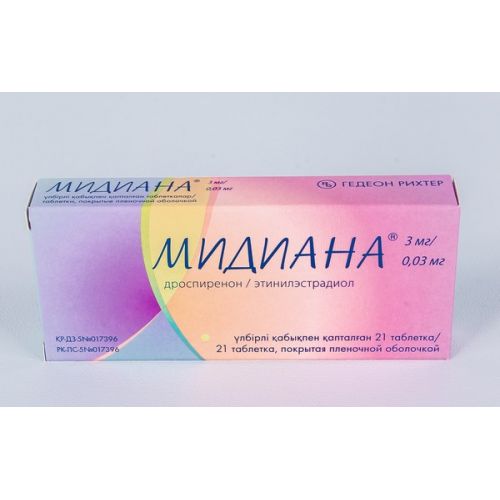

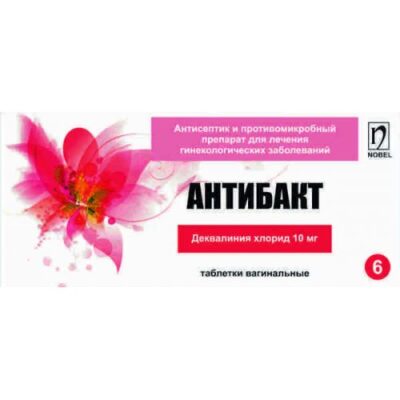
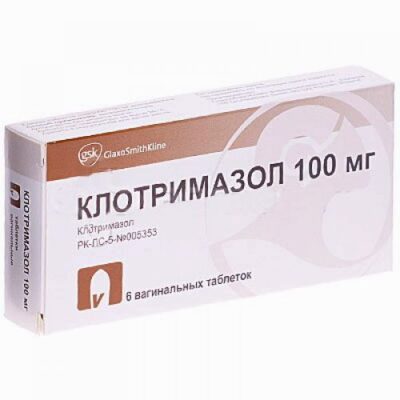
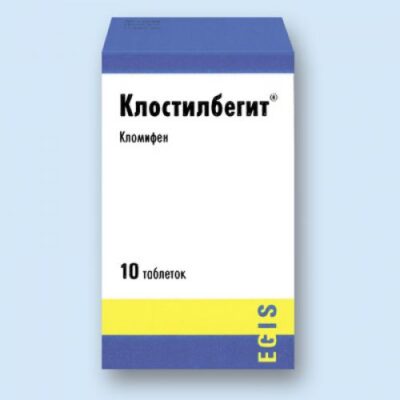
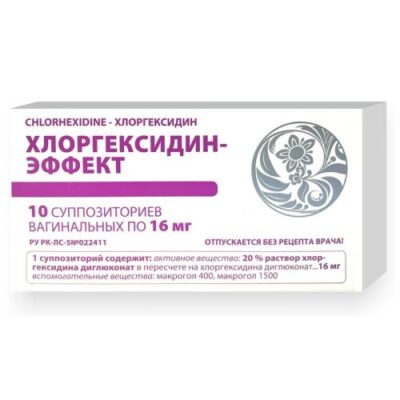
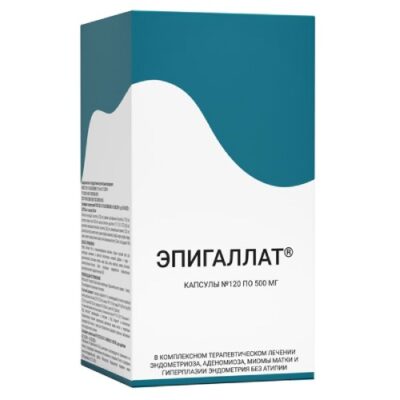
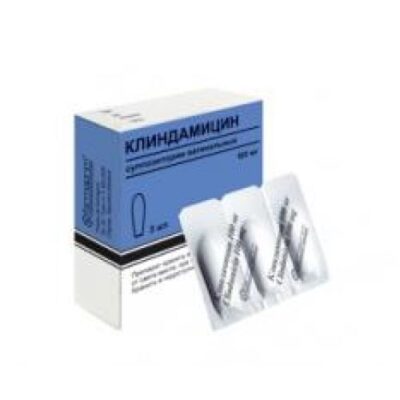
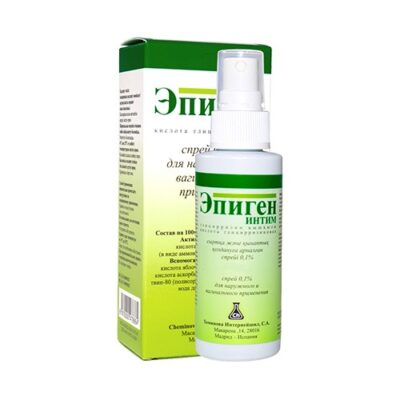
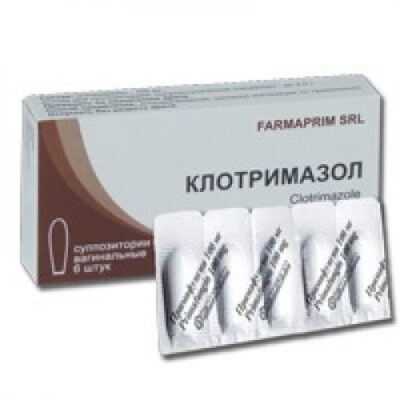
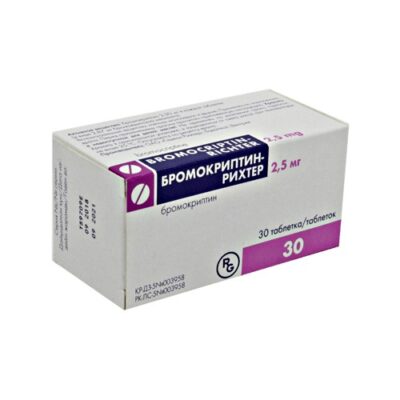






Reviews
There are no reviews yet.